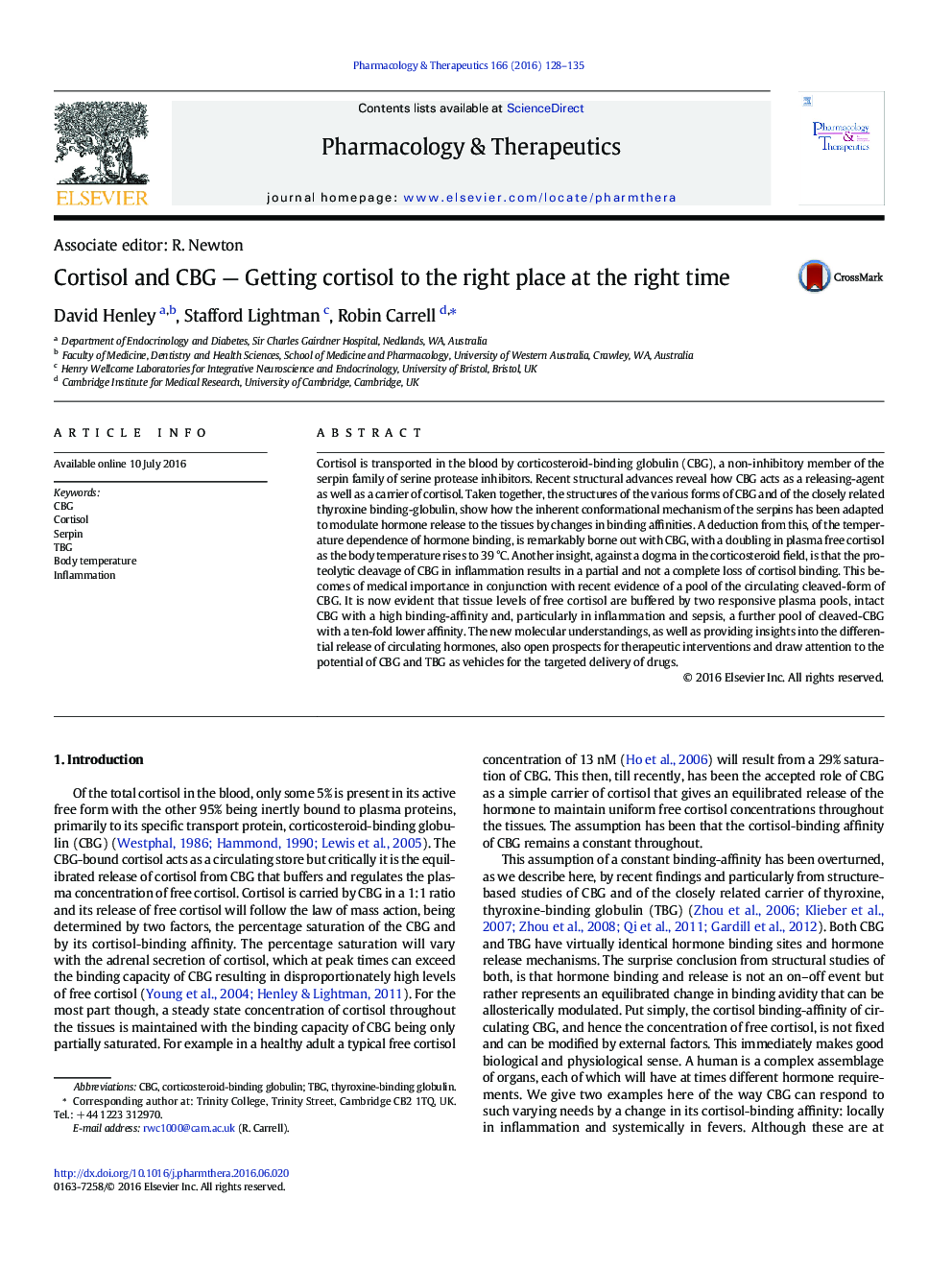| Article ID | Journal | Published Year | Pages | File Type |
|---|---|---|---|---|
| 5557787 | Pharmacology & Therapeutics | 2016 | 8 Pages |
Cortisol is transported in the blood by corticosteroid-binding globulin (CBG), a non-inhibitory member of the serpin family of serine protease inhibitors. Recent structural advances reveal how CBG acts as a releasing-agent as well as a carrier of cortisol. Taken together, the structures of the various forms of CBG and of the closely related thyroxine binding-globulin, show how the inherent conformational mechanism of the serpins has been adapted to modulate hormone release to the tissues by changes in binding affinities. A deduction from this, of the temperature dependence of hormone binding, is remarkably borne out with CBG, with a doubling in plasma free cortisol as the body temperature rises to 39 °C. Another insight, against a dogma in the corticosteroid field, is that the proteolytic cleavage of CBG in inflammation results in a partial and not a complete loss of cortisol binding. This becomes of medical importance in conjunction with recent evidence of a pool of the circulating cleaved-form of CBG. It is now evident that tissue levels of free cortisol are buffered by two responsive plasma pools, intact CBG with a high binding-affinity and, particularly in inflammation and sepsis, a further pool of cleaved-CBG with a ten-fold lower affinity. The new molecular understandings, as well as providing insights into the differential release of circulating hormones, also open prospects for therapeutic interventions and draw attention to the potential of CBG and TBG as vehicles for the targeted delivery of drugs.
